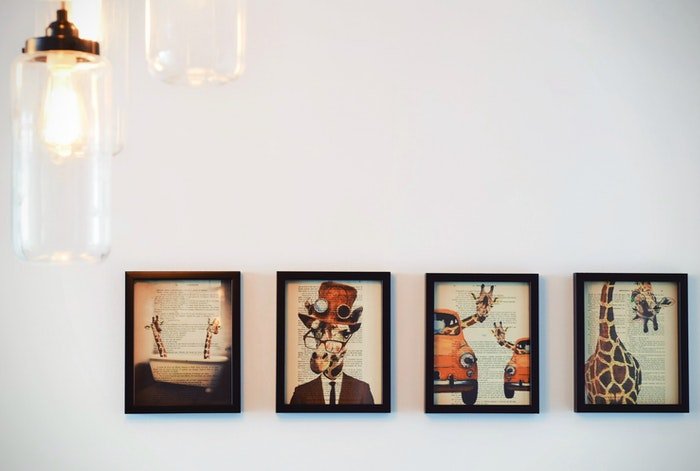Car photography can be fun, exciting, and very rewarding. Whether you’re ready to get down and dirty with off-road car pictures or up for snapping editorial shots of a luxury car, we’ll show you how to capture that vehicle’s personality.
Here is our guide to getting the most out of your next four-wheeled model!
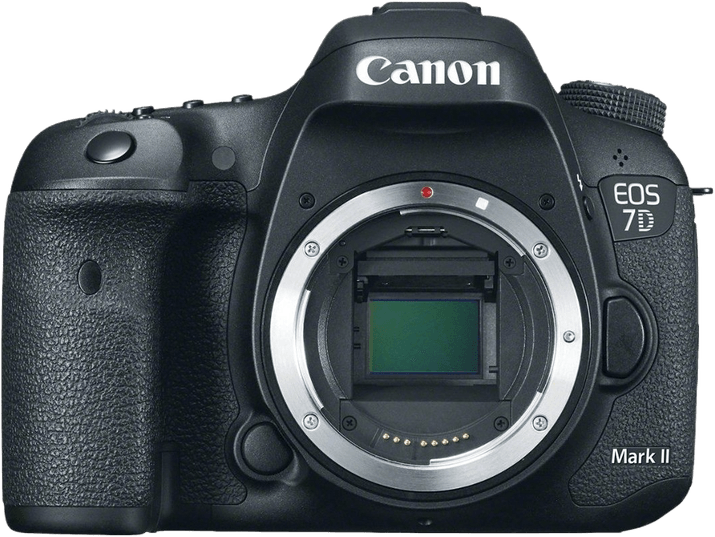
10. Car Photography: 10 Tips for Choosing a Unique Perspective to Make It Stand Out
Want to know the best way to stand out with your car photography? Avoid mainstream shots. Find something unique.
Sure, if you work for a client, they might have specific ideas. But go above and beyond during the shooting. Find an exciting location or an unusual angle.
Look at the vehicle from a new perspective. Take aerial shots or use a drone to capture the auto in a bigger frame.
Remember, sometimes the best results come from unexpected settings.
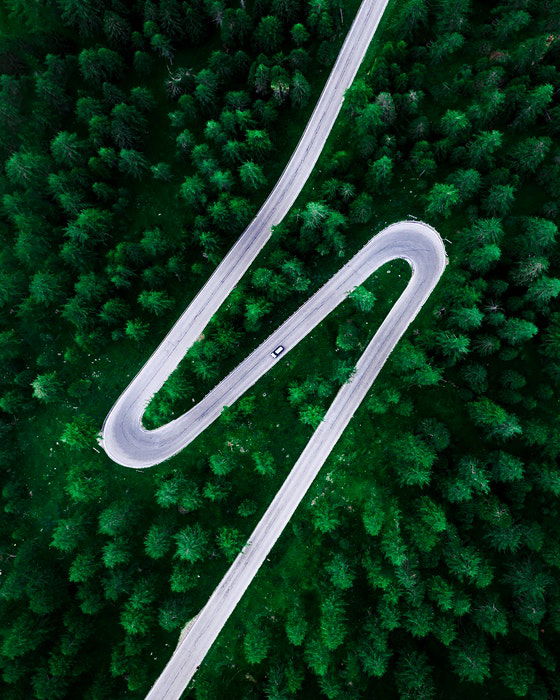
9. Add a Human Element to Liven up Your Photo
Car photography can involve people too. Get a shot of someone driving the auto or opening its door.
You can also capture someone standing with pride with the auto in the background.
Forget about featuring hot models with the vehicles, though. That is a cliche that car magazines used to do. It won’t be welcomed in 2020.
It is important that you find a subject that matches the car’s personality. People can relate better to the photo if they like the person in it.
Marketing is still relying on stereotypes. A Lamborghini has a certain target audience. Make sure that the model you choose for the photo fits the target.
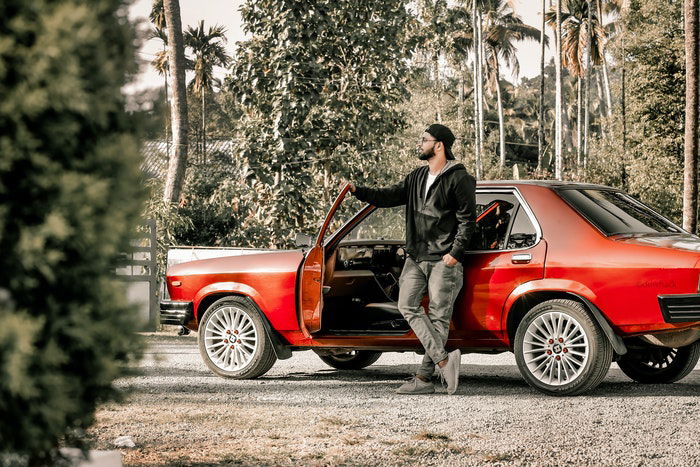
8. Photograph the Inside to Show More of the Car
Get inside the auto and take photos in there. People will spend their time driving inside the vehicle. Not standing outside and admiring it. Even if it’s the most beautiful four-wheeled model in the world.
Focus on the steering wheel and the dashboard. This is the area that people will see all the time. If there are special features such as a screen, make sure to include in the photo.
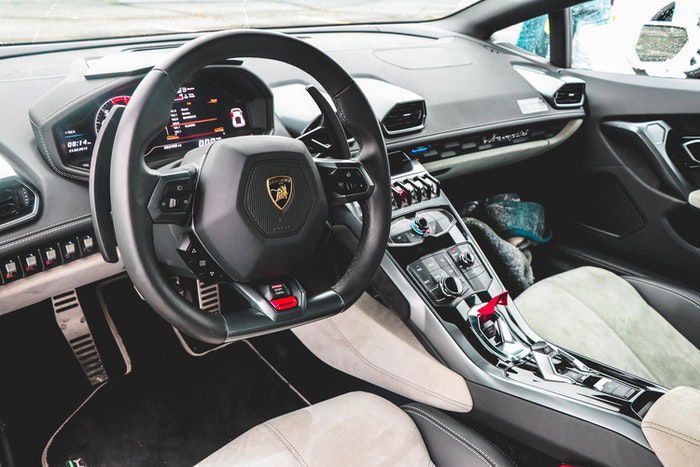
7. Compose Your Photo Well to Create Balance
The composition is key in every photo. People tend to like a shot better if it’s well-composed.
Use the rules you learn in photography: leading lines, rule of thirds or the golden ratio. You can play with the location or with the colors.
Fill the frame to create a more appealing photo.
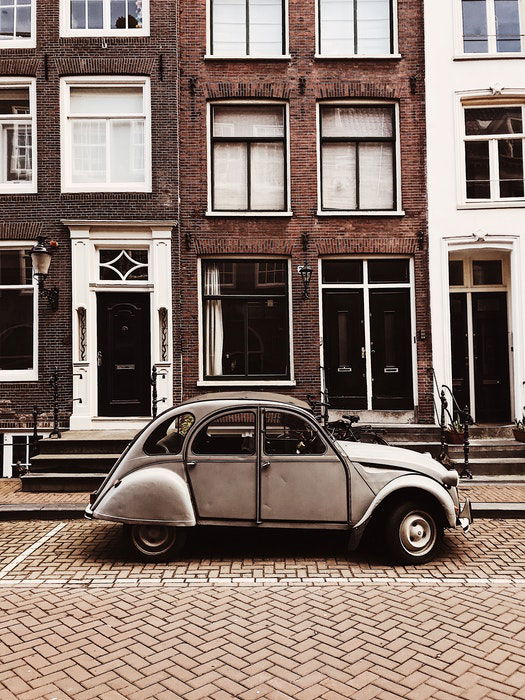
6. Find the Best Lighting Conditions for Well-Lit Images
Lighting will make or break your shot! For staged outdoor photography, you need to decide what time of day to get started.
The most ideal time is during the golden hour. This time includes the first hour after sunrise and the last hour of light before sunset.
If you are shooting pictures for cars in the high sun, try using a reflector or an umbrella. Finding shade or snapping on a nice ND filter can help too.
For more difficult lighting, put your camera on a tripod and don’t risk camera shake!
This can be especially beneficial for some lower-end camera models that don’t do well with high ISOs. It allows you to keep your ISO and shutter to a minimum to reduce noise.
Keep in mind that car colors and paint impact the time of day you photograph as well. Most colors hate direct sunlight. But some colors work really well with it.
The color will also determine the background and the location you use for the photo. Some colors pop out with the right background. Think about a red vehicle in a green environment.
Matte finish cars tend to do better in various lighting situations due to the lack of reflections. Traditional finishes will respond better in more even lighting.
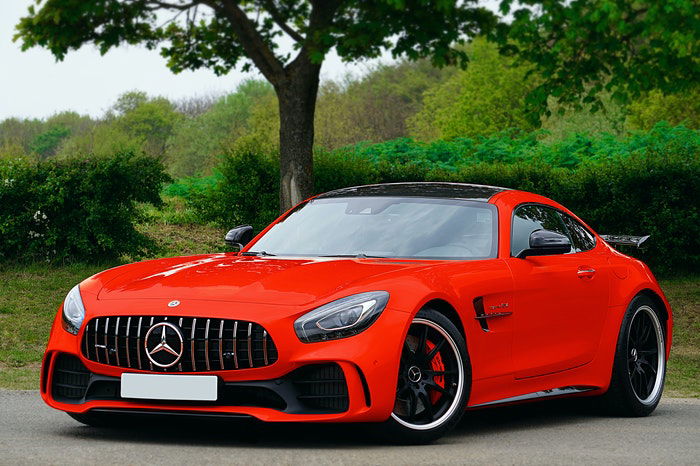
5. Use Exciting Locations to Highlight the Vehicle
Photography is telling stories. As any good storyteller knows, the setting is everything. Picking the right location for your car photographs will express the feeling and define the character of the images.
Make sure your background suits the car and the theme. An exotic car may not be right in an off-road muddy setting. And an off-road vehicle could look off in front of a ritzy hotel.
Don’t be afraid to let the car become a part of the background, allow it to interact! Examples can include cars driving through mud, picking up dust, climbing over an obstacle, etc.
Also, you want a background that doesn’t overpower and take away from the vehicle. Avoid background distractions that will pull the viewer’s eye away from the car.
Power lines, other cars, bright trash bins can all pull away from your subject. Find a location that enhances your subject.
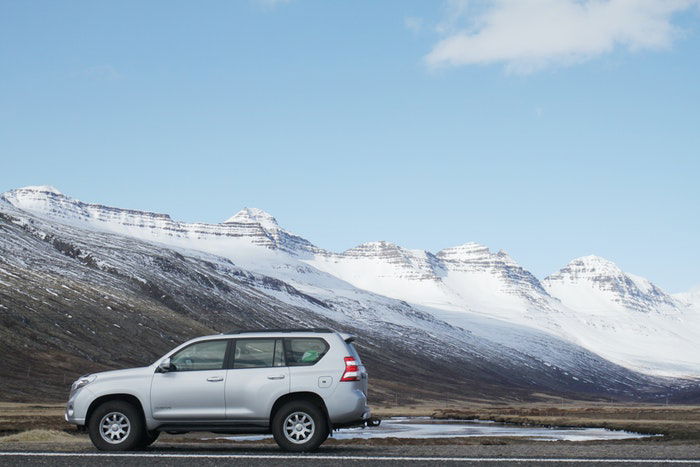
4. Capture Driving Shots to Show Movement
Although static posed shots are cool, driving shots are even more fun! Express what cars are meant to be doing.
The most common and visually stunning driving shots are when the car is in focus and the rest is in a panned motion blur. Panning is using the camera to follow the subject as it is moving parallel to you.
A cool way to get some motion in your picture is to stand next to the road and let the car drive past you. Follow the car with your lens in one smooth action and set the shutter speed to 125th of a second.
Another way is to shoot the car out of another moving car. With someone else driving, photograph the car out of the window. Do note that you must be careful with this, cars are not toys.
By doing this you will get some nice movement on the road and on the wheels. Most of these shots tend to be taken on freeways during empty hours.
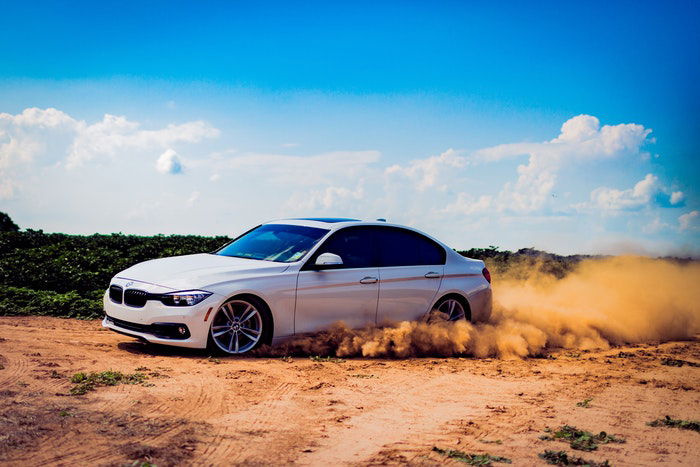
3. Experiment with Angles for Interesting Results
Cars have a variety of cool angles, make use of them! A very common mistake is shooting at your eye level—as in, the view you get while standing in front of the car.
Despite your eye finding the view a logical way to shoot, it really is the least flattering angle for a car. Part of the reason for this is how familiar the perspective is. Another reason is because that angle really cannot highlight all of the car’s best features.
Go high or go low. Go to the side. Turn at an angle. Do something weird if you have to!
Keep in mind that for a more commercial aspect, vertical images tend to be more practical. Despite horizontal being more flattering for traditional prints.
Keep in mind that vertical images look better on mobile devices, so make the effort to sneak some into your shooting.
Vertical images can be a bit more complicated for a subject that is long rather than tall. You have to find a composition you like. Play with angles to make the most of it.
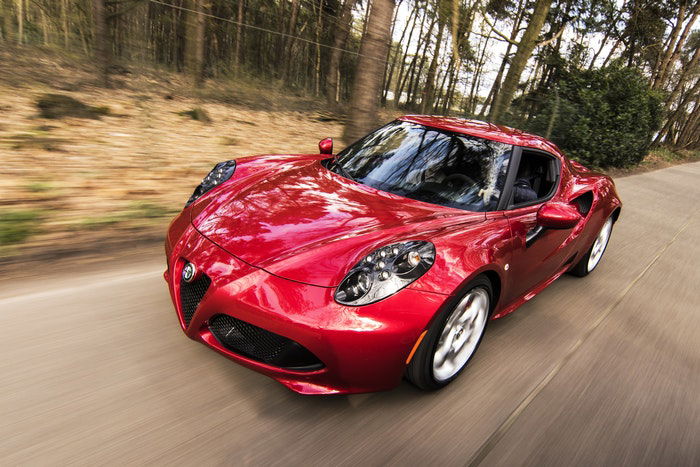
2. Capture the Details to Show Off the Car’s Personality
Cars have character and personality. From the front lights making faces to the bodies curving into shapes, each car has some kind of quirk to it. Some cars have unique features that you’ll likely want to celebrate.
Sometimes the quirk is in the setting of the shot. Instead of just photographing an entire car, maybe there is a cool reflection in the rearview mirror.
If the auto has stunning seat covers, feature them in your car photography. Capturing the headlights is also popular. The shape and color of the light is a very unique characteristic.
Shooting auto details is the best way to show its personality.
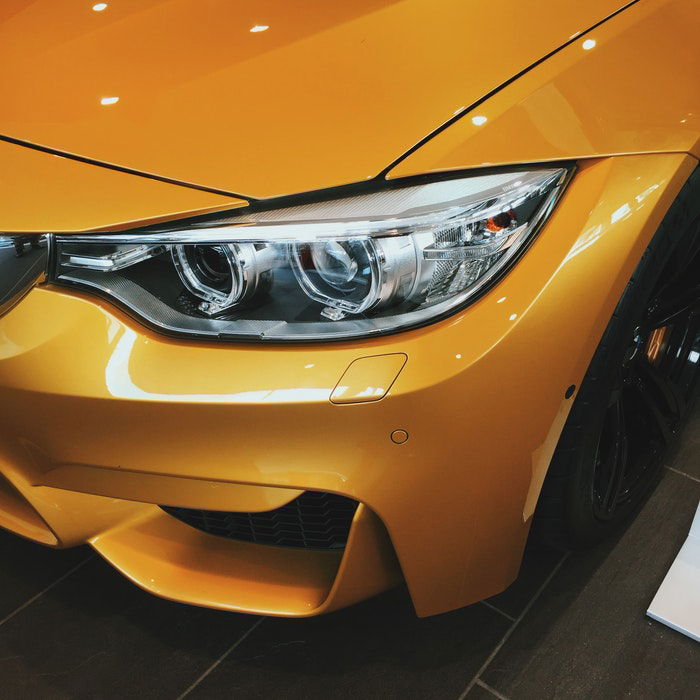
1. Use Reflections to Catch the Viewer’s Attention
There are times that call for cool reflections on a car and there are times where the reflections take away from what you are trying to show.
When you want reflections, first get the car freshly washed. Then, at your location of choice, angle the car at a diagonal from whatever you’re trying to reflect and shoot away.
Some of the best reflections include sunsets, scenic overlooks, unique neon lights, and other such accessories to your shot.
Be mindful of reflections in situations that don’t call for them. The key is to try to limit the amount of overexposed hot spots due to reflections.
Sometimes, the solution is to just move yourself or the car a couple of inches!
If you’re trying to photograph a car’s body and highlight the vehicle’s shape, reflections can be a nuisance or make the frame too busy.
A lot of this is a matter of moving your own position or the position of the car in proximity to everything around. You can also use umbrellas and reflectors to manipulate reflections.
One of the most important things you want to show in your car pictures are the design lines of the car, or as I like to call it, ‘her curves’. Reflections can spoil these curves.
If you are struggling with your own self reflecting in the car, put the camera on a tripod and timer.
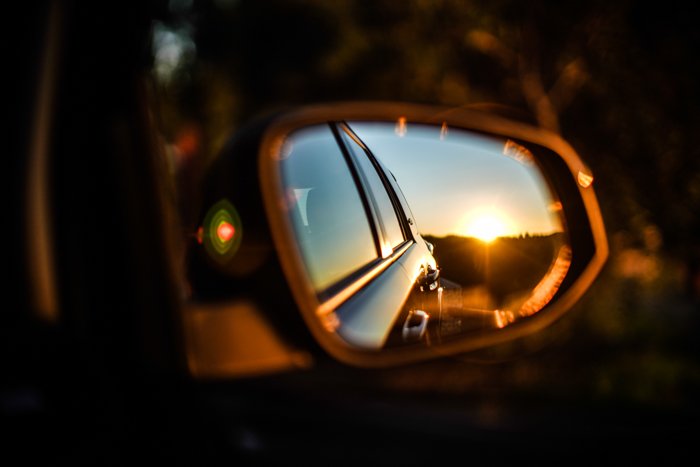
Technical Aspects of Car Photography
What Camera Should You Use for Car Photography
The camera you want for car photography is fast, has a reliable focus, and a decent number of megapixels. If you’re just doing car portraits, you can get away with a large variety of cameras (even slow ones!).
If you’re looking to capture shots of cars racing past you, a camera with a fast fps (frames-per-second) is key. The Canon 7D Mark II body or the Sony Alpha 7R III models are great examples of fast cameras.
If you’re going to be doing some photography in garages, look for camera models that have less noise at higher ISO levels.
Also, keep an eye out for sensitive sensors. These do well in difficult lighting situations as garages don’t tend to be ideal for brightness.
Compare the low light abilities of several models before settling on one. Use a website like DxOMark for all of your low light comparison needs!
In general, a higher megapixel count will pick up much more detail than lower megapixel counts.
Are you looking to get into the more commercial aspect of vehicle photography? Larger companies will be asking you what megapixel count your camera is.
This allows the brand to blow the images up to billboard size without losing quality! Keep in mind that the higher the megapixel count, the larger the file size.
For more commercial work, the Canon 5D and 1Dx series are optimal choices.
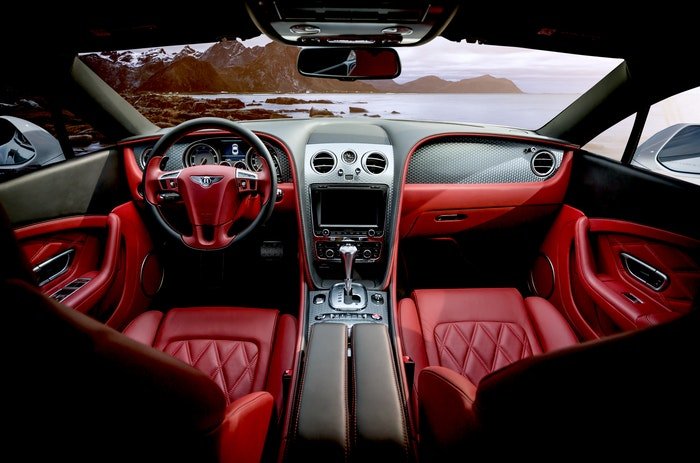
Choosing the Best Lenses
A lot of the quality and final image look is based on the type of lens used. Look for lenses with a maximum f/stop of 2.8. Lower is even better.
It is better to have the option of narrowing the aperture if you feel it is too wide. You don’t want to be stuck with a lens with a narrow aperture you cannot make wider. The wider the aperture, the more light that enters the camera.
I’ve worked with a lens that was an f/4 for many years. But the difference between the f/4 and f/2.8 was very significant. The f/4 was much harder to use for low light and the depth of field was not as creamy.
A big trend hitting car photography is shallow depth of field. This is great because the subject can be isolated. This means you don’t have to worry about a cluttered composition.
Another benefit is the fact that a shallow depth of field adds an artistic feeling to your image. Something that can put you above the rest.
Have one subject in focus with the rest blending into a creamy bokeh. It results in visually pleasing and simplified car pictures.
When looking at lenses, or a selection of lenses, consider your shooting distance as well.
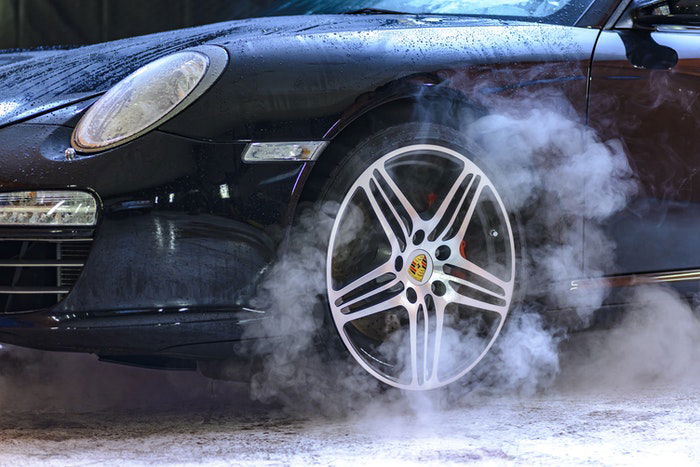
The most commonly used lenses for car photography are standard lenses or wide-angle lenses. Because each car has a “face” and a “personality” to it, wide-angle lenses are great at capturing the vehicle’s character with its distortion.
Also known as normal lenses, standard lenses produce an image that roughly matches what the human eye sees.
They are some of the easiest lenses to use. It is because you do not have to factor in any form of distortion.
Standard lenses also tend to have wide-open apertures, making them great for low light and shallow depth of field. An awesome standard lens focal length is the 50mm.
Lenses also have their share of accessories that you can buy, the best of which are filters.
The most common way to use a filter is to protect the glass of the lens. I’d much rather crack my $10 filter than a $1,000 lens!
Polarising filters are excellent for outdoor photography and auto pictures. These filters are made to specifically reduce glare from reflected surfaces, such as car bodies. These filters are made up of specially adapted glass. When turned at an angle to a light source, they will reduce glare in your car pictures.
This is very useful when you’re working with many reflective surfaces or when the sun is low in the sky.
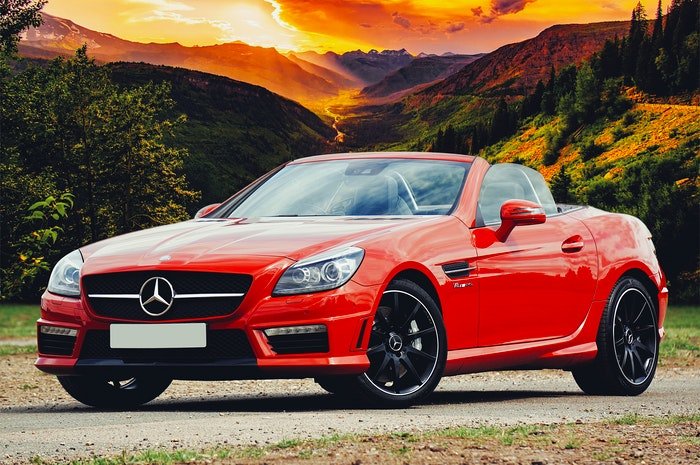
Conclusion
Car photography is one of the most popular niche in product photography. Like everything, it takes a lot of practice and time to learn the ropes.
But now that you have these ten tips in mind, go out there and make those cars look like rockstars!
See our list of best back up cameras for your car, too, for safer reversing!
Looking to learn more about taking your photography to the next level? Check out our course Photography for Beginners next!

